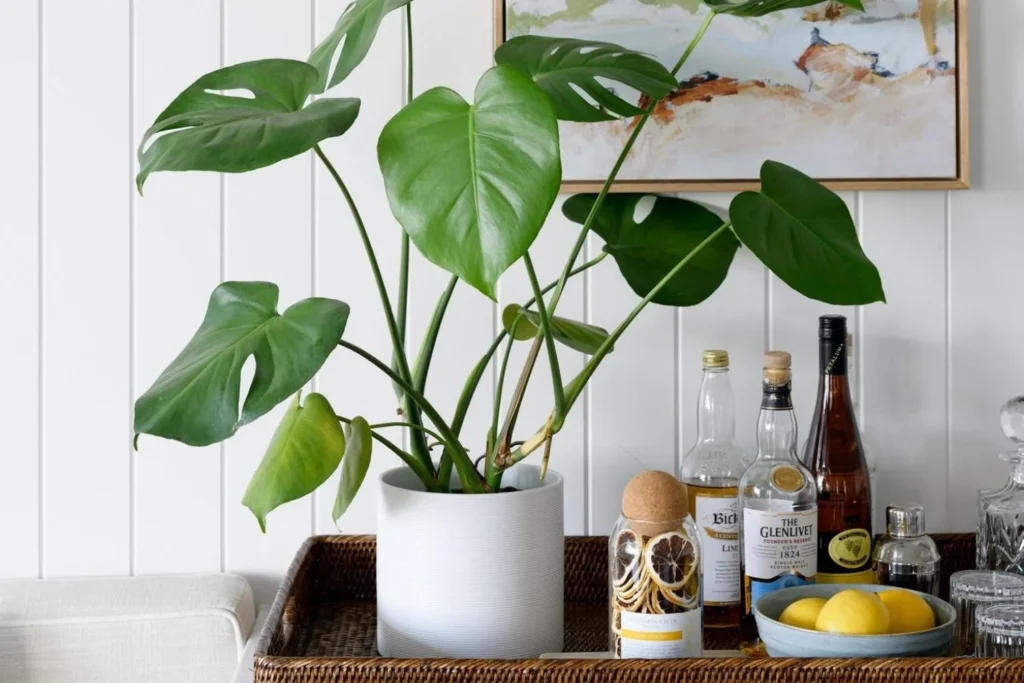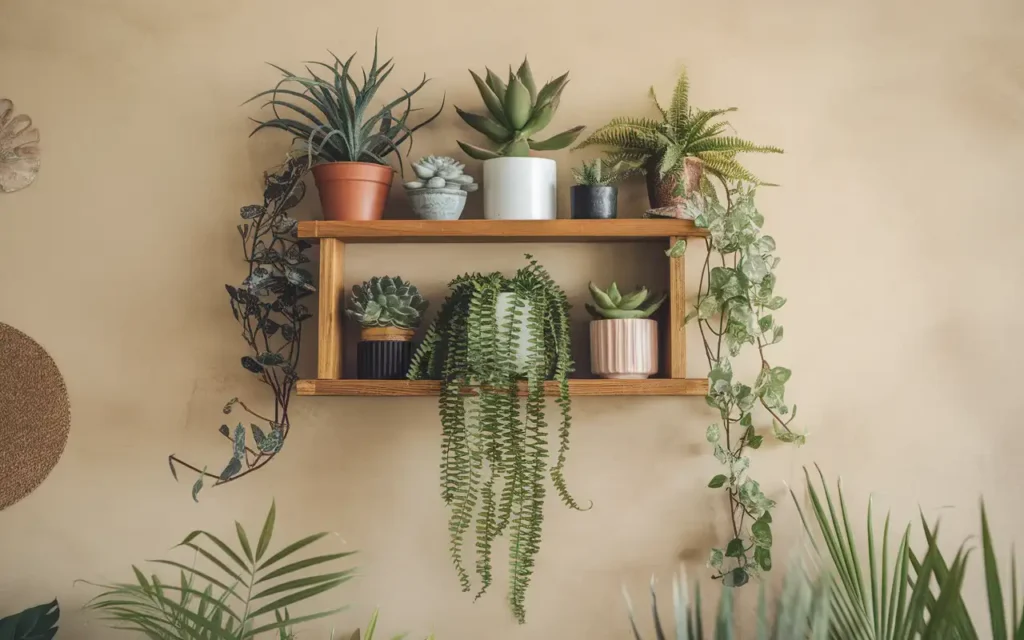
Indoor plants improve air quality and enhance our home decor. They also reduce stress and boost productivity.
Indoor plants bring nature into your home, creating a serene and inviting atmosphere. They help purify the air by removing toxins and increasing oxygen levels. Plants such as snake plants, spider plants, and peace lilies are known for their air-purifying qualities.
Indoor greenery can also improve mental well-being, reducing stress and anxiety. Caring for plants provides a sense of accomplishment and a therapeutic hobby. Low-maintenance options like succulents and pothos are great for beginners. With various sizes and types, there’s an indoor plant suitable for every space and style. Enhance your living environment with the beauty and benefits of indoor plants.
Benefits Of Indoor Plants
Leave a Comment / Garden / By ashrafsalman
Indoor plants can help clean the air. They remove toxins and produce oxygen. This makes the air fresher and healthier. Plants like spider plants and snake plants are great for this.
Having plants around can make you feel happier. They reduce stress and improve mood. Taking care of plants can be very relaxing. This helps you feel more calm and at ease.
Indoor plant can make your home look beautiful. They add color and life to any room. Plants can match any decor style. They make spaces feel more welcoming and cozy.
Choosing The Right Plants
Low-light plants thrive in dim rooms. Snake plants and ZZ plants are great choices. Pothos and Philodendrons also do well in low light. They need less sunlight to grow. These plants are perfect for offices and apartments.
Pet-friendly plants are safe for cats and dogs. Spider plants and Boston ferns are good choices. Areca palms and Calathea are also pet-safe. These plants will not harm your furry friends. Always double-check if a plant is safe for pets.
Low-maintenance plants need little care. Succulents and cacti are easy to grow. Aloe vera and Jade plants are also low-maintenance. Peace lilies and Sansevieria are hardy and need less water. These plants are perfect for busy people.
Placement And Arrangement

Place large plants in the corners. Small plants go well on coffee tables. Use hanging plants to save space. Brighten up shelves with succulents.
Choose plants that purify the air. Peace lilies are perfect for bedrooms. Place them on nightstands. Use small pots for window sills. Lavender helps you relax.
Herbs grow well in the kitchen. Place them near windows. Aloe vera thrives in bathrooms. Use shelves for extra space. Keep plants away from direct heat sources.
Plant Care Essentials
Indoor plant need water to grow. Too much water can harm them. Water the plants when the soil feels dry. Use a small watering can. Avoid wetting the leaves. Always check the soil before watering.
Light is essential for indoor plants. Place them near a window for natural light. Indirect sunlight is best for most indoor plants. Rotate the plants weekly for even growth. Use grow lights if natural light is limited.
Fertilizers help plants grow healthy. Use a balanced fertilizer every month. Liquid fertilizers are easy to use. Follow the instructions on the label. Over-fertilizing can damage the plants. Always measure the right amount.
Dealing With Common Issues
Indoor plant can attract pests. Common pests include spider mites, aphids, and mealybugs. Use a gentle insecticidal soap for treatment. Keep plants clean by wiping leaves regularly. Ensure plants have good air circulation. This helps prevent pest infestations. Remove any dead leaves or debris from the soil.
Overwatering is harmful to indoor plants. Check if soil is dry before watering. Stick your finger into the soil to test. Use pots with drainage holes. This allows excess water to escape. Water plants less in winter. Plants need less water in cooler months. Yellowing leaves can be a sign of overwatering.
Plant diseases can affect growth. Common signs include yellow leaves, spots, and mold. Isolate sick plants to prevent spread. Remove any affected parts of the plant. Use a fungicide if necessary. Ensure proper light and ventilation. This helps keep plants healthy. Wash hands and tools before touching other plants.
Creative Display Ideas
Hanging planters save space and look beautiful. They can be hung from the ceiling or walls. Use different lengths of ropes to create an interesting look. Plants like spider plants and pothos do well in hanging planters. Remember to use strong hooks to hold the weight.
Vertical gardens are perfect for small spaces. Use shelves or special frames to create a green wall. Succulents and ferns are great choices for vertical gardens. Watering can be easy with a spray bottle. Vertical gardens can also act as a natural air filter.
Terrariums are like small greenhouses. Use glass containers to create mini gardens. Add small stones for drainage. Choose small plants like moss and air plants. They need very little care. Place terrariums near windows for natural light.
Diy Plant Projects

Repotting plants keeps them healthy. Choose a pot that is one size larger. Gently remove the plant from its old pot. Shake off old soil from the roots. Place the plant in the new pot. Fill around it with fresh soil. Water the plant well after repotting.
Propagation helps create new plants. Cut a healthy stem from the parent plant. Place the stem in water or soil. Roots will grow in a few weeks. Keep the new plant in a warm place. Water it regularly. This method works well for many indoor plants.
Plant shelves save space and look nice. Choose sturdy materials like wood or metal. Measure the space where the shelf will go. Cut the materials to size. Assemble the shelves using screws and brackets. Paint or decorate the shelves if you like. Place your plants on the shelves. Make sure they get enough light.
Seasonal Plant Care
Indoor plant need special care in winter. Keep them away from cold drafts. Place them in sunny spots. Water less frequently to avoid root rot. Use a humidifier to maintain moisture. Fertilize sparingly during this season.
Summer can be tough for indoor plants. Increase watering to keep soil moist. Move plants away from direct sunlight to prevent leaf burn. Mist plants regularly to boost humidity. Check for pests and treat promptly. Ensure good air circulation around the plants.
Plants need different care in each season. Adjust watering schedules as needed. Rotate plants to ensure even light exposure. Prune dead leaves and stems. Use seasonal fertilizers to promote growth. Monitor plants for signs of stress.
Frequently Asked Questions
What Are The Best Indoor Plants?
The best indoor plants include spider plants, snake plants, and peace lilies. These plants are low-maintenance and improve indoor air quality.
How Often Should I Water Indoor Plants?
Water indoor plant when the top inch of soil feels dry. Overwatering can lead to root rot. Check soil moisture regularly.
Can Indoor Plants Purify The Air?
Yes, indoor plants can purify the air. They remove toxins like formaldehyde and benzene, improving indoor air quality.
Do Indoor Plants Need Sunlight?
Most indoor plants need indirect sunlight. Place them near windows but avoid direct sunlight, which can scorch leaves.
Conclusion
Indoor plants brighten up spaces and improve air quality. They require minimal care and offer numerous benefits. Start with easy-to-maintain varieties. Enjoy the calming presence they bring to your home. Make indoor plants a part of your living space today and reap the rewards of a healthier environment.
